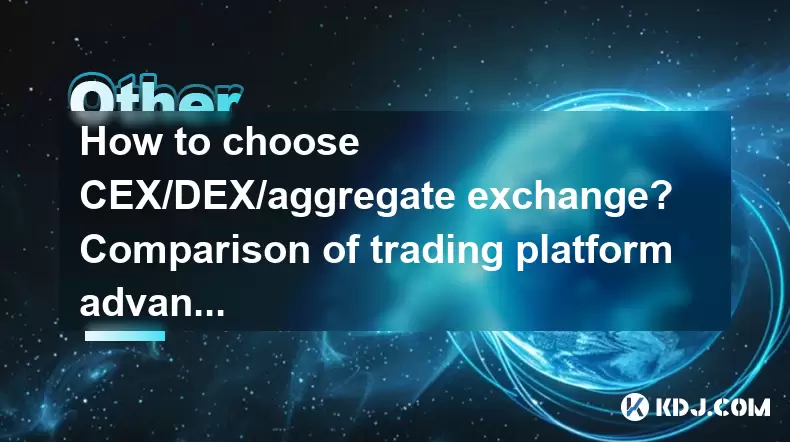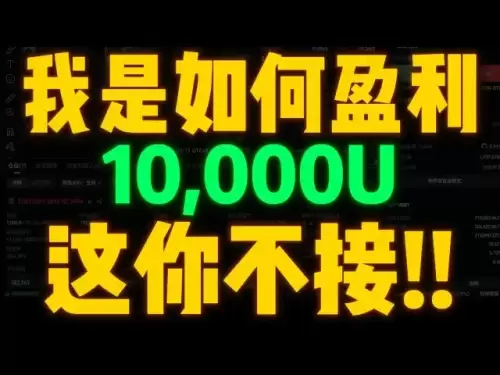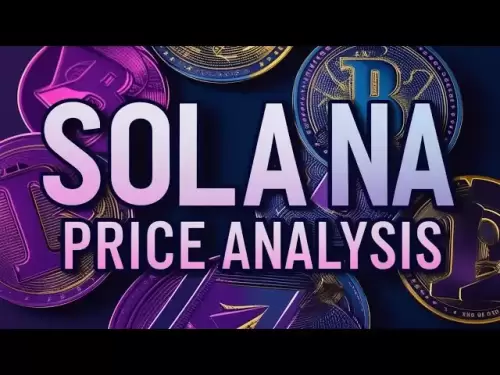-
 Bitcoin
Bitcoin $118300
-0.58% -
 Ethereum
Ethereum $3825
0.11% -
 XRP
XRP $3.137
-0.71% -
 Tether USDt
Tether USDt $0.9999
-0.01% -
 BNB
BNB $803.9
-3.37% -
 Solana
Solana $181.5
-1.94% -
 USDC
USDC $0.9999
0.01% -
 Dogecoin
Dogecoin $0.2238
-2.51% -
 TRON
TRON $0.3358
2.12% -
 Cardano
Cardano $0.7844
-2.16% -
 Hyperliquid
Hyperliquid $43.31
-1.48% -
 Sui
Sui $3.807
-4.04% -
 Stellar
Stellar $0.4203
-1.96% -
 Chainlink
Chainlink $17.79
-3.00% -
 Bitcoin Cash
Bitcoin Cash $567.8
-1.34% -
 Hedera
Hedera $0.2614
-4.30% -
 Avalanche
Avalanche $24.19
-4.46% -
 Litecoin
Litecoin $109.2
-0.74% -
 UNUS SED LEO
UNUS SED LEO $8.969
-0.01% -
 Toncoin
Toncoin $3.404
3.97% -
 Ethena USDe
Ethena USDe $1.001
-0.01% -
 Shiba Inu
Shiba Inu $0.00001307
-3.19% -
 Uniswap
Uniswap $10.33
-1.23% -
 Polkadot
Polkadot $3.884
-4.06% -
 Monero
Monero $312.9
-1.87% -
 Dai
Dai $1.000
0.01% -
 Bitget Token
Bitget Token $4.537
-2.24% -
 Pepe
Pepe $0.00001156
-3.40% -
 Cronos
Cronos $0.1437
-0.89% -
 Aave
Aave $282.8
-2.77%
How to choose CEX/DEX/aggregate exchange? Comparison of trading platform advantages and disadvantages
When choosing a crypto exchange, consider CEX for high liquidity and user-friendliness, DEX for security and privacy, or aggregate exchanges for best prices across platforms.
Jun 02, 2025 at 10:28 am

Choosing the right cryptocurrency exchange can be a daunting task, given the variety of options available, including Centralized Exchanges (CEX), Decentralized Exchanges (DEX), and aggregate exchanges. Each type of platform has its unique features, advantages, and disadvantages. This article will guide you through the process of selecting the best exchange for your needs by comparing the key aspects of CEX, DEX, and aggregate exchanges.
Understanding Centralized Exchanges (CEX)
Centralized Exchanges (CEX) are the most traditional type of cryptocurrency trading platforms. They are operated by a central authority, which manages the order books, user accounts, and transaction processes. Some of the most well-known CEX platforms include Binance, Coinbase, and Kraken.
Advantages of CEX:
- High Liquidity: CEX platforms typically have higher trading volumes, leading to better liquidity and tighter spreads.
- User-Friendly Interface: These platforms are often designed with beginners in mind, offering intuitive interfaces and comprehensive customer support.
- Wide Range of Trading Pairs: CEXs usually support a large number of cryptocurrencies and trading pairs, making it easier to find the assets you want to trade.
- Fiat On-Ramps: Many CEXs allow users to deposit and withdraw fiat currencies, which is convenient for those transitioning from traditional finance.
Disadvantages of CEX:
- Security Risks: Since CEXs are custodial, they hold users' funds, which makes them a target for hackers. Notable incidents include the Mt. Gox and Bitfinex hacks.
- Regulatory Compliance: CEXs must comply with local regulations, which can lead to restrictions on certain features or user access based on geographic location.
- Privacy Concerns: Users often need to complete KYC (Know Your Customer) procedures, which can compromise privacy.
Understanding Decentralized Exchanges (DEX)
Decentralized Exchanges (DEX) operate on blockchain technology and do not rely on a central authority to manage transactions. Instead, trades occur directly between users' wallets through smart contracts. Examples of DEX platforms include Uniswap, SushiSwap, and PancakeSwap.
Advantages of DEX:
- Enhanced Security: Since users retain control of their private keys, the risk of funds being hacked from the exchange itself is significantly reduced.
- Privacy: DEXs typically do not require KYC, allowing users to trade anonymously.
- Non-Custodial: Users maintain full control over their assets, reducing the risk of exchange-related fraud or mismanagement.
Disadvantages of DEX:
- Lower Liquidity: DEXs often have lower trading volumes compared to CEXs, which can result in higher slippage and less favorable trading conditions.
- User Experience: The interfaces of DEXs can be less user-friendly, particularly for those new to cryptocurrency trading.
- Limited Trading Pairs: The range of available trading pairs on DEXs may be more limited compared to CEXs.
Understanding Aggregate Exchanges
Aggregate Exchanges are platforms that consolidate liquidity from multiple sources, including both CEXs and DEXs. They aim to provide users with the best possible prices by comparing rates across various exchanges. Examples include 1inch and Matcha.
Advantages of Aggregate Exchanges:
- Best Price Execution: By pulling liquidity from multiple sources, aggregate exchanges can offer the best possible prices for trades.
- Convenience: Users can access multiple exchanges through a single interface, simplifying the trading process.
- Enhanced Liquidity: By aggregating liquidity from various sources, these platforms can offer better trading conditions than standalone DEXs.
Disadvantages of Aggregate Exchanges:
- Complexity: The technology behind aggregate exchanges can be complex, potentially leading to issues with transaction execution.
- Dependence on External Sources: The performance of aggregate exchanges relies on the stability and reliability of the underlying platforms they pull liquidity from.
- User Experience: Similar to DEXs, the interfaces of aggregate exchanges can sometimes be less intuitive than those of CEXs.
Factors to Consider When Choosing an Exchange
When deciding between a CEX, DEX, or aggregate exchange, several factors should be taken into account:
Security and Control:
- If you prioritize security and control over your funds, a DEX might be the best choice. However, if you're willing to trade some control for a more user-friendly experience, a CEX could be more suitable.
- Aggregate exchanges offer a middle ground, providing enhanced security compared to CEXs while still offering a convenient trading experience.
Liquidity and Trading Pairs:
- For those who need to trade a wide variety of assets with high liquidity, a CEX is likely the best option.
- If you're focused on specific DeFi tokens or less common cryptocurrencies, a DEX or aggregate exchange might be more appropriate.
User Experience and Interface:
- If you're new to cryptocurrency trading, a CEX with a user-friendly interface and robust customer support could be the most suitable choice.
- Experienced traders might prefer the more advanced features and flexibility offered by DEXs or aggregate exchanges.
Regulatory Compliance and Privacy:
- If privacy is a top concern, a DEX that does not require KYC would be the best fit.
- For those who need to comply with regulatory requirements, a CEX that adheres to local laws might be necessary.
Fees and Costs:
- CEXs typically charge lower trading fees due to their economies of scale, but they may have higher withdrawal fees.
- DEXs and aggregate exchanges often have higher trading fees but lower or no withdrawal fees since users control their own funds.
How to Start Trading on Each Type of Exchange
Starting on a CEX:
- Sign Up: Visit the CEX's website and create an account by providing the necessary personal information.
- Complete KYC: Follow the platform's KYC process, which may involve uploading identification documents.
- Deposit Funds: Use the deposit section to add funds to your account. You can usually deposit both cryptocurrencies and fiat currencies.
- Trade: Navigate to the trading section, select your desired trading pair, and execute your trades.
Starting on a DEX:
- Connect Wallet: Visit the DEX's website and connect your cryptocurrency wallet (e.g., MetaMask).
- Add Liquidity: If you want to provide liquidity, you can add tokens to liquidity pools.
- Trade: Use the swap feature to exchange tokens directly from your wallet. Enter the amount you want to trade and confirm the transaction.
Starting on an Aggregate Exchange:
- Connect Wallet: Similar to DEXs, connect your cryptocurrency wallet to the aggregate exchange.
- Select Best Route: The platform will show you the best trading routes across multiple exchanges. Choose the route that offers the best price.
- Execute Trade: Confirm the transaction, and the aggregate exchange will execute the trade across the selected exchanges.
Frequently Asked Questions
Q: Can I trade the same cryptocurrencies on both CEXs and DEXs?
A: Yes, many popular cryptocurrencies like Bitcoin, Ethereum, and stablecoins can be traded on both CEXs and DEXs. However, the specific trading pairs available may differ between platforms.
Q: Are there any fees associated with using aggregate exchanges?
A: Yes, aggregate exchanges typically charge a fee for their service, which is usually a small percentage of the trade amount. Additionally, you may incur fees from the underlying exchanges used for the transaction.
Q: How do I know if a DEX is trustworthy?
A: To determine the trustworthiness of a DEX, you should research the platform's smart contract audits, review user feedback, and check the transparency of the team behind the project. Platforms with a strong track record and community support are generally more reliable.
Q: Can I use a CEX and a DEX simultaneously?
A: Yes, you can use both types of exchanges simultaneously. Many traders use CEXs for high-liquidity trading and DEXs for specific DeFi tokens or to maintain greater control over their assets.
Disclaimer:info@kdj.com
The information provided is not trading advice. kdj.com does not assume any responsibility for any investments made based on the information provided in this article. Cryptocurrencies are highly volatile and it is highly recommended that you invest with caution after thorough research!
If you believe that the content used on this website infringes your copyright, please contact us immediately (info@kdj.com) and we will delete it promptly.
- Dalio's Take: Balancing Bitcoin, Gold, and the Debt Doom Loop
- 2025-07-31 00:51:15
- Ethereum's Epic Rally: A Decade of Decentralization and a Celebration in NFTs
- 2025-07-31 01:11:05
- XRP Price, Altcoins, and the 50x Potential: What's the Buzz?
- 2025-07-31 01:15:14
- BlockchainFX ($BFX): Is This Altcoin the Best Crypto Presale of 2025?
- 2025-07-31 01:21:27
- PENGU Price Plunge? Binance Transfers and Token Transfer Trends
- 2025-07-30 23:10:15
- Navigating Crypto Investment: Bitcoin Mining and the Rise of Cloud Mining in the Big Apple
- 2025-07-30 22:31:15
Related knowledge

How to start a business using blockchain?
Jul 28,2025 at 12:36am
Understanding the Basics of Blockchain TechnologyBefore diving into the process of starting a business using blockchain, it's crucial to understand wh...

What is a token on the blockchain?
Jul 21,2025 at 07:00am
Understanding the Concept of a TokenIn the realm of blockchain technology, a token is a digital representation of an asset or utility that exists on a...

Can blockchain be used for identity verification?
Jul 18,2025 at 02:14pm
Understanding Identity Verification in the Digital AgeIn the modern digital landscape, identity verification has become a critical component for ensur...

What is a consensus mechanism in blockchain?
Jul 21,2025 at 03:01am
Understanding the Basics of Consensus MechanismsA consensus mechanism is a critical component of any blockchain network. It refers to the process by w...

How to explain blockchain to someone with no tech background?
Jul 18,2025 at 11:08pm
Understanding the Basics of BlockchainTo explain blockchain to someone with no tech background, it's essential to start with simple analogies and avoi...

Who invented blockchain technology?
Jul 23,2025 at 01:28am
Origins of Blockchain TechnologyBlockchain technology did not emerge from a single inventor or institution. Instead, it evolved through a series of ac...

How to start a business using blockchain?
Jul 28,2025 at 12:36am
Understanding the Basics of Blockchain TechnologyBefore diving into the process of starting a business using blockchain, it's crucial to understand wh...

What is a token on the blockchain?
Jul 21,2025 at 07:00am
Understanding the Concept of a TokenIn the realm of blockchain technology, a token is a digital representation of an asset or utility that exists on a...

Can blockchain be used for identity verification?
Jul 18,2025 at 02:14pm
Understanding Identity Verification in the Digital AgeIn the modern digital landscape, identity verification has become a critical component for ensur...

What is a consensus mechanism in blockchain?
Jul 21,2025 at 03:01am
Understanding the Basics of Consensus MechanismsA consensus mechanism is a critical component of any blockchain network. It refers to the process by w...

How to explain blockchain to someone with no tech background?
Jul 18,2025 at 11:08pm
Understanding the Basics of BlockchainTo explain blockchain to someone with no tech background, it's essential to start with simple analogies and avoi...

Who invented blockchain technology?
Jul 23,2025 at 01:28am
Origins of Blockchain TechnologyBlockchain technology did not emerge from a single inventor or institution. Instead, it evolved through a series of ac...
See all articles

























































































